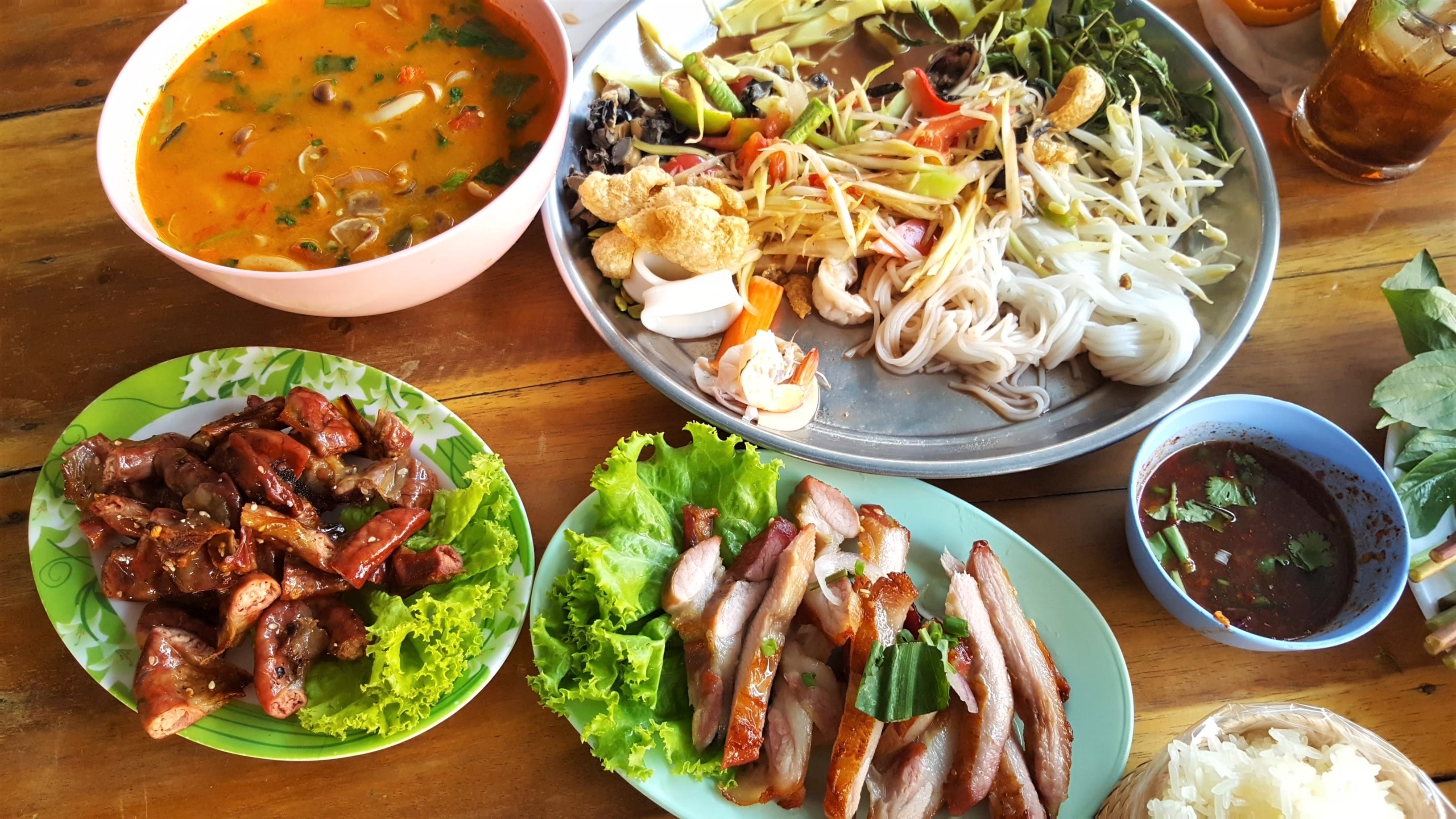Words by Jake Phillips
The first word I learned in Thai was gai, which means chicken. It’s written as a symbol in the shape of a chicken’s head, so it’s the one word you can’t forget. To me, gai means creamy green curry with basil, sour soup with mushrooms that pop in your mouth, or crispy skin thigh over fried rice with ketchup. My childhood favourites Mum would cook, or sometimes if I was lucky, my grandma.
When we visited Thailand, my grandma, Yai, cooked in her little kitchen under a dim light, sweating over a gas bottle in the heat to make our favourite dishes. Mine was Khao Khluk Kapi, a sweet and savoury dish, shrimp paste infused rice with slices of chewy sweet pork sausage, shredded sour green mango, and a chopped omelette with bright red chillies on top. Every mouthful was spicy, sweet, salty, and sour. The four essential flavours that Thai cuisine is famous for. This dish is still my favourite, though I’ve never seen it outside of Thailand, except when my Mum makes it.
Pattaya was our home for a couple of years, a coastal tourist town in the Chonburi province, just nearby Si Racha, known as the provenance of Sriracha hot sauce. Regularly, we’d walk as a family through the local bar district on our way to restaurants at Jomtien beach. It became our tradition to dine at this local restaurant where kathoey (trans) girls performed in glamourous, shimmering dresses every night, dancing to traditional Thai music. I would always order the American fried rice, a Thai dish prepared historically for American soldiers to remind them of home. Ketchup-soy fried rice with raisins and fried mini frankfurters served with a greasy fried egg with a runny yolk and extra ketchup on the side.
Many of the sois (streets) that lead to Jomtien are lined with food carts that sell salty fish and dried squid, noodles, and hot soup. Occasionally, Thai desserts like Khanom Buang (my sister’s favourite), crispy little folded crepes wrapped around a sweet, sticky, orange-coloured filling. My brother and dad usually opted for the meatier carts, serving whole roast ducks, seasoned barbeque pork, roast pork belly, and especially flame-grilled pork known as Moo Yang. Moo Yang is sweet-glazed and served on skewers with wedges of burned fat that drip onto the sticky rice it’s served with. The abundance of street food, markets, noodle houses, and little hole-in-the-wall takeout joints are part of Thai culture.
On some evenings, we walked along Jomtien beach and watched the sun glow across the boulevard. Pink light painted the faces of Thailand’s lost boys, the young stallholders lining the beach selling grey-market Tasers, drinks, and porn DVDs. Mum bought their margarita buckets rimmed with fresh rockmelon, sweet pineapple, strawberries, and mint leaves. After sundown, the beach would fade to black, and tiki torches flared up and down the sand. One time, we followed the lights to a sweet spot with beach chairs and a smiling attendant. She chopped fresh young coconuts for us to sip and provided a white plastic spoon to scoop out the tender coconut meat. The coconut water was sweet, fresh, and juicy. We sat there and stared at the blackness of the water as the tide came in and the shore sparkled from the streetlights behind us. I looked out above the water at the twinkling stars and found Orion’s belt, wondering if it looked the same as in Australia. I imagined the rich red desert sand surrounded by a flat horizon and clear skies. There was more light pollution in Thailand and lots of hills and forests. My two homes were very different. There were no fresh coconuts in Australia, no Vitasoy sweet soy milk, and no red raspberry Fanta (only orange).
Unfortunately, even in modern-day Australia, Thai food often isn’t that authentic. Restaurants differ in their reproduction of signature flavours, regularly muted, overworked in some way, or altogether inaccurate. All too familiar is overly sweet Pad Thai served with the consolatory lemon wedge, fried rice with nothing more than a bit of egg and soy sauce, or the tragic omission of spice altogether to safely cater to an undiscerning palate. Many classic dishes are relegated to special requests, like Rad Na, wok-fried flat rice noodles and tender pork in a savoury gravy, a regular lunchtime favourite in Thailand but too texturally adventurous for most local menus. There are some exceptions, however, dishes that really manage to capture the spirit of Thai cuisine reliably. I recommend searching for Pad Krapow—chilli basil pork with fried eggs—or larb gai—spicy chicken mince salad. Both are famous in Thailand and easy to find here.
As a budgeting student, these days, I mostly prepare simple dishes, a reflection of the modern era where cooking is less of an essential skill. Its heritage is challenged by the busyness that dominates life, although I’m privileged to still live with my mum, who continues to pass down her expertise. We cook certain dishes together, and it brings me back to my grandmother’s food and her role as the providing matriarch that nourished my childhood holidays. I know I must return to Thailand soon, hopefully before Yai passes away. She’s showing her age in recent photos, and her regular food posts on Facebook have changed to focus on family since the pandemic. Soon, I hope to feel the spirit of my people again and experience Thailand’s wonderful sights and amazing food. If you’re looking for a holiday yourself, it really is one of the most beautiful places, with culture and down-to-Earth people that will warm your heart and fantastic food that will feed more than just your belly. Bonus, you’ve already got one word under your belt: gai; ก่.

